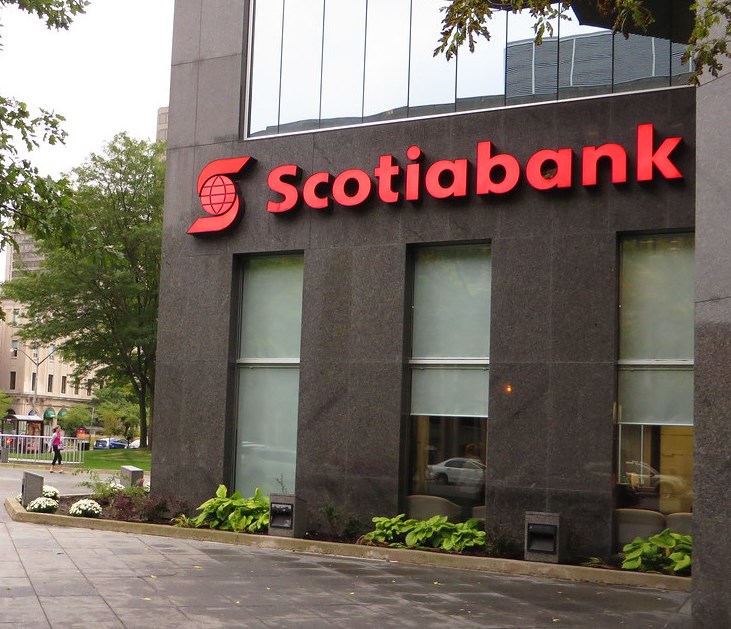
Narrow-moat Bank of Nova Scotia (BNS), or Scotiabank, reported fiscal second-quarter results that showed the strain of shutdowns on the economy, but all things considered, we were still pleased with the numbers. Unsurprisingly, provisioning was up significantly, coming in at $1.8 billion versus a range of just $0.7 billion-$0.8 billion over the last several quarters. This was the biggest factor driving the year-over-year decline in EPS of 39% to CAD 1.04. Despite the big hit from provisioning, adjusted revenue was still up 4% year over year, helping absorb the higher provisioning.
Expenses did jump up, growing 8% year over year, which was partially driven by COVID-19-related spending. The bank’s common equity Tier 1 ratio dropped to 10.9% this quarter from 11.4% last quarter, although this was almost entirely driven by risk-weighted asset growth as the bank took on a material amount of commercial loan balances with clients drawing down existing revolvers. Removing the effect of increasing RWAs, the common equity Tier 1 ratio would have been close to stable. The big questions for all the banks today are how big credit costs will become and if they have enough profitability and capital to absorb these costs.
Based on current results, we believe the answer is that Scotiabank is well positioned to deal with the current downturn. Management expects each segment to remain profitable even as the current downturn develops, and in every scenario that management has run, it has common equity Tier 1 ratios staying above 10%. As a reminder, with the latest changes from OSFI, the minimum common equity Tier 1 ratio target is now 9%. If management’s scenarios are any indication, Scotiabank should be able to work its way through the upcoming downturn. After incorporating the latest results, we have lowered our fair value estimate to $70 per share.
Scotiabank’s diversified business model helped the bank this quarter, as weaker results from Canadian Banking and International Banking (driven by higher provisioning) were cushioned by more resilient results from the markets and wealth management segments, which both saw higher year-over-year net income. We would expect a bit more pressure on NIMs as rate cuts feed through in both the Canadian and international segments, and we wouldn’t expect such strong trading and I-banking results to continue, but even so, we still expect the bank to remain profitable for the rest of the year. Management hinted that provisioning next quarter could be roughly as high as what we saw this quarter, which would be manageable. We also don’t expect as much RWA inflation going forward. The bank disclosed that roughly 3% of loan balances are related to COVID-19 exposed sectors, and roughly 1.7% of loans are related to energy. We think that “manageable credit costs” is the key theme so far. We’ll know a lot more as the third quarter develops, and we’ll have a much better idea of how well the deferral programs are working, what it means to reopen the economy, and what the effects of government support programs have been.





















